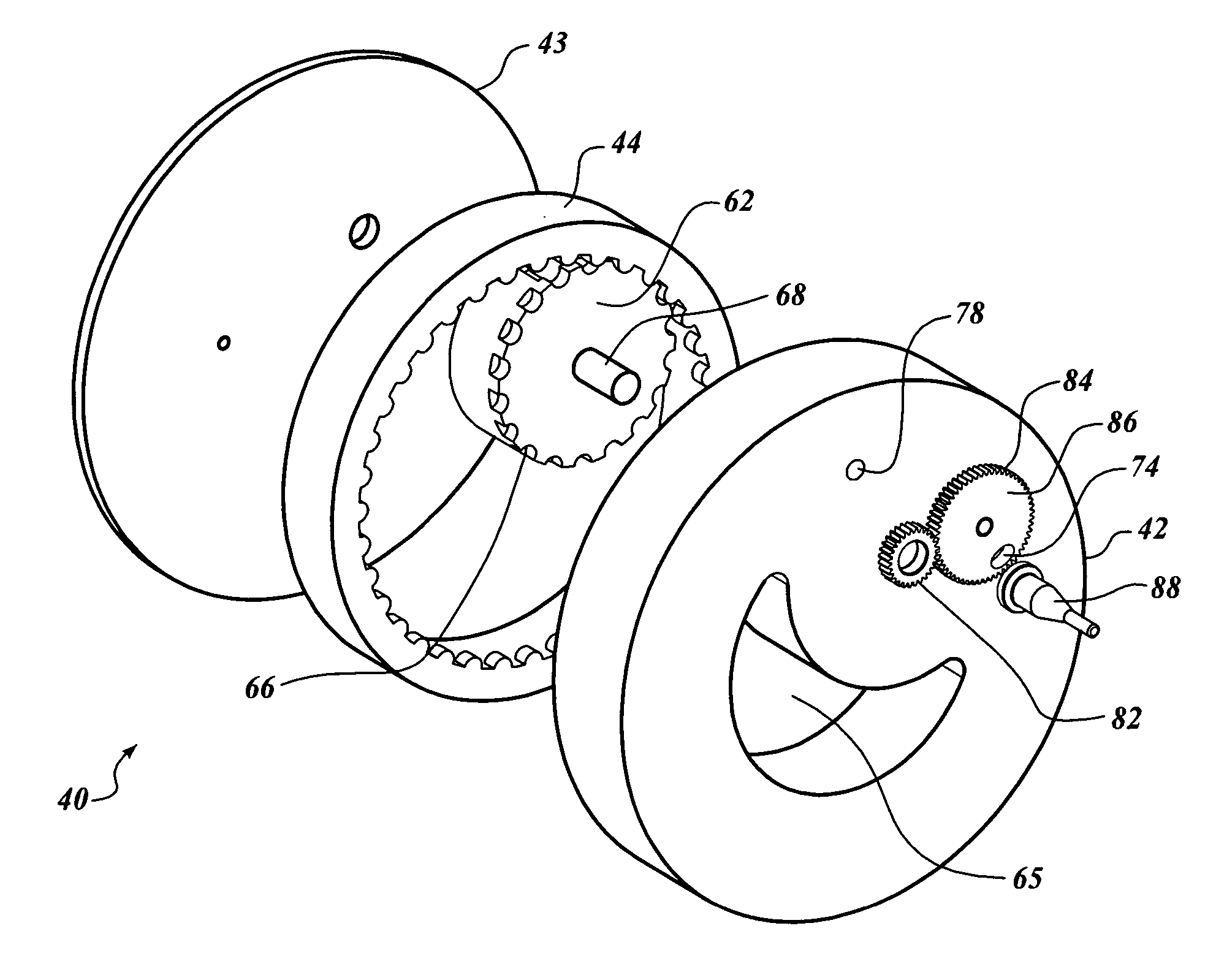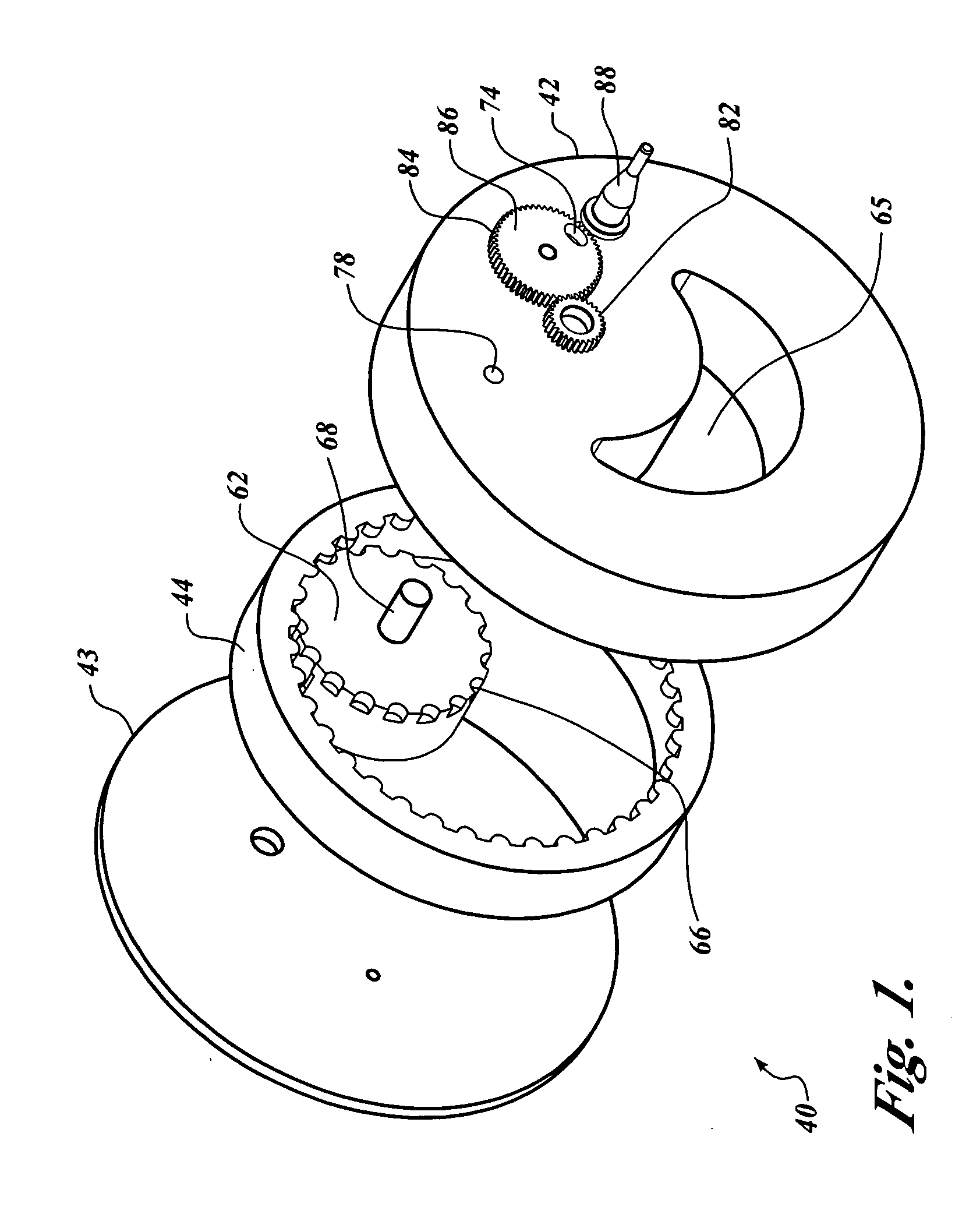Rotary machine and thermal cycle
- Summary
- Abstract
- Description
- Claims
- Application Information
AI Technical Summary
Benefits of technology
Problems solved by technology
Method used
Image
Examples
Example
[0050]FIG. 1 depicts a preferred embodiment of a rotary machine 40. The rotary machine 40 employs a generally toroidal-shaped housing 42 having a cover 43 at one end. Disposed substantially within the toroidal housing 42 and integrally connected to the housing 42 is a plurality of rotary components. The generally toroidal-shaped housing 42 is substantially cylindrical in shape at its perimeter. However, at an end of the housing 42 opposite of the cover 43, the housing forms a generally toroidal inner housing 56 (see FIG. 2).
[0051] An expansion ring 44 is located within the housing 42 and the cover 43. More specifically, the expansion ring 44 is disposed between the toroidal housing 42 and the toroidal inner housing 56. The expansion ring 44 is generally cylindrical in shape, having disposed on a portion of its inner surface an expansion ring gear 46 (see FIG. 2). The expansion ring gear 46 and that corresponding portion of the expansion ring 44 are generally disposed within an expa...
PUM
 Login to View More
Login to View More Abstract
Description
Claims
Application Information
 Login to View More
Login to View More - R&D
- Intellectual Property
- Life Sciences
- Materials
- Tech Scout
- Unparalleled Data Quality
- Higher Quality Content
- 60% Fewer Hallucinations
Browse by: Latest US Patents, China's latest patents, Technical Efficacy Thesaurus, Application Domain, Technology Topic, Popular Technical Reports.
© 2025 PatSnap. All rights reserved.Legal|Privacy policy|Modern Slavery Act Transparency Statement|Sitemap|About US| Contact US: help@patsnap.com



